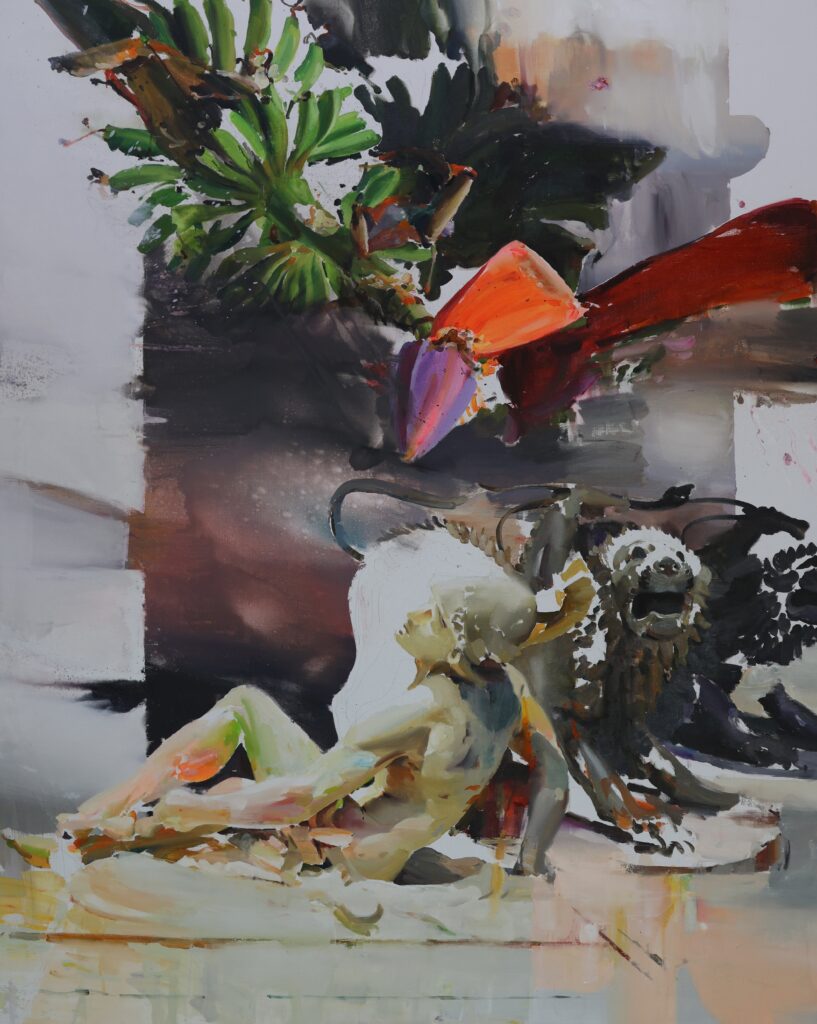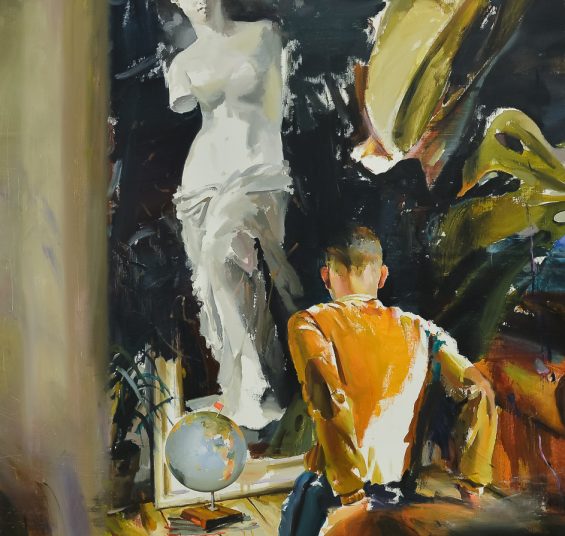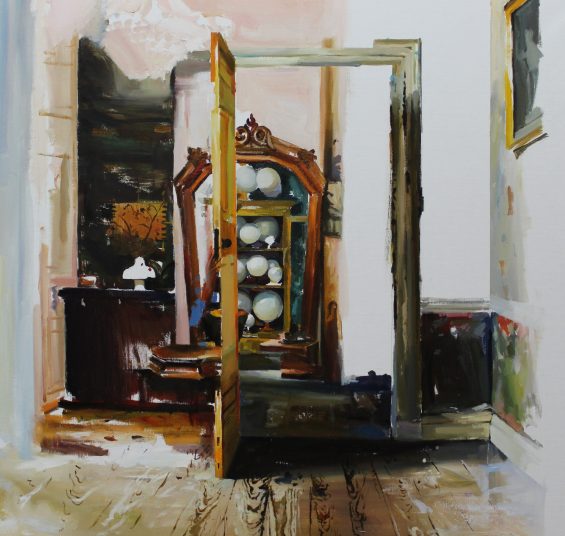Pavel Grosu
Biography
Pavel Grosu employs digital collage as a tool for building carefully thought-out compositional structures, later translated into paintings. His works go through many versions as he manipulates the images he departs from in various ways including cutting, juxtaposition and reshaping, to produce initial forms of digital collage. His approach to painting is characterized by the prominence of the figurative, the preference for vague historical or social references and the emphasis on the technical quality of the works, seen first and foremost as aesthetic objects. Exploring notions as dream, illusion and memory, Grosu depicts scenes and portraits in which the subjects appear to be frozen in time; caught in an illusory moment, they evoke an uncertainty about the future. The representations of nature and culture (personal and archive photos, artefacts, architectural elements) in his works are selected in a very personal way, from everyday scenes and people he observes that catch his attention or close friends. Conveying influences of the Baroque and Russian masters, the arresting and sometimes dramatic paintings also bear traces of a simple, carefree life. Interested to paint characters of his own age and to immortalize the beautiful period of youth, the artist subtly explores the notion of time, its segmentation and the strange nature of its perception.
If you are interested in more works by this artist
Address
Băiculești 29 Street, District 1, 013193, Bucharest, Romania
Opening Hours
Wednesday – Friday: 2 PM – 7 PM
Saturday: 12 PM – 6 PM
Sunday – Monday, by appointment only
Newsletter
Sign up to receive the latest news on the gallery’s artists
Sector 1 Gallery © 2023. All Rights Reserved.
Privacy Policy








